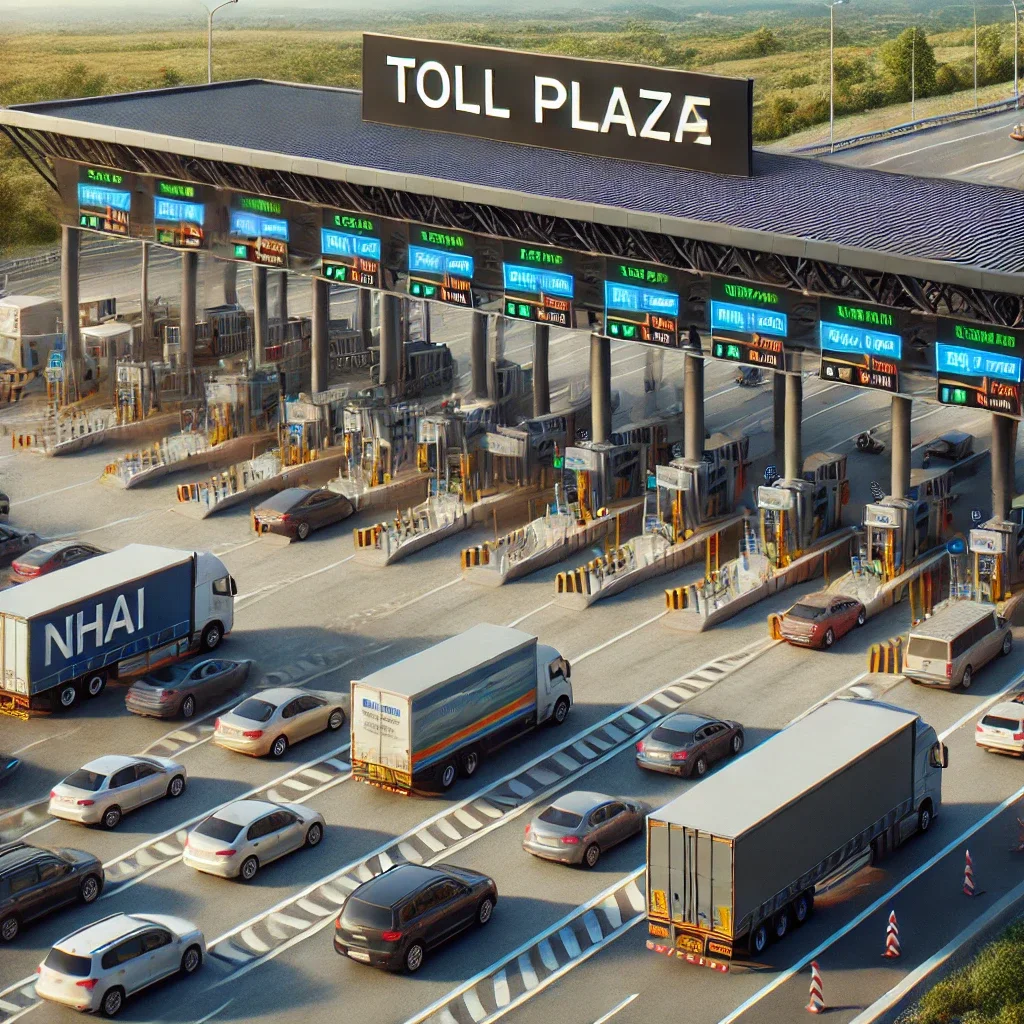India’s extensive road network has been a cornerstone of its economic development, with toll plazas playing a vital role in generating revenue for infrastructure maintenance and expansion. Over the years, these toll collections have become a significant source of income for the government. This article examines the financial implications of toll plaza revenues, the expenditures on road network development under the BJP and Congress regimes, and evaluates which governance model has been more effective for India’s progress. It also explores the proposed GPS-based toll collection model, which could potentially revolutionize toll revenues in the future.
Toll Plazas Collections:
India’s toll plazas are managed by the National Highways Authority of India (NHAI) and other state agencies. Toll collections have surged over the years, thanks to improved technology, increased vehicular traffic, and robust infrastructure projects. Since the inception of toll collection, a total of ₹2.4 lakh crore has been collected across India’s national highways, according to recent data presented in the Lok Sabha.
- State-wise Collections:
- Uttar Pradesh leads with ₹32,510 crore collected, followed by Rajasthan and Maharashtra.
- The Delhi-NCR region collected the least, at ₹263 crore.
- Top National Highways:
- NH48 (Delhi to Chennai) tops the list with collections of ₹24,490 crore.
- NH44 (Srinagar to Kanniyakumari), NH16 (Kolkata to Chennai), and NH27 (Porbandar to Silchar) follow closely.
The introduction of FASTag, an electronic toll collection system, has further streamlined Toll Plazas collections. Over 10 crore FASTags have been issued, and more than 98% of toll payments in recent months were made through FASTag, ensuring efficiency and transparency.
Road Network Development: BJP vs. Congress
Expenditure on Infrastructure Development
- Congress Era (2004–2014):
- During the Congress’ tenure, annual spending on road development averaged around ₹1.5 lakh crore.
- Key projects included the Golden Quadrilateral and the North-South and East-West Corridors under the National Highways Development Project (NHDP).
- Road construction pace averaged 5-7 km per day, highlighting slow execution in certain periods.
- BJP Era (2014–Present):
- Under the BJP government, the average annual expenditure on roads has doubled to approximately ₹3.5 lakh crore.
- Flagship initiatives like Bharatmala Pariyojana aim to enhance connectivity and decongest highways with an outlay exceeding ₹10 lakh crore.
- The road construction pace has risen to an average of 35 km per day, with record-breaking achievements in terms of highway length built in a year.
Revenue vs. Expenditure Comparison
- Congress Government:
- Toll Plazas revenues during this period were relatively low due to fewer vehicles on the road and less advanced toll collection systems.
- Road projects often faced delays, leading to cost overruns and underutilization of toll revenue.
- BJP Government:
- Toll Plazas revenues have soared due to increased vehicular traffic and digitization.
- Despite higher spending on infrastructure, efficient project execution and rising revenues have narrowed the gap between expenditure and income, ensuring better returns on investment.
The Proposed GPS-Based Toll Collection Model
The Government of India is exploring a GPS-based toll collection system, a model already in use in several developed countries. Under this system, toll charges will be levied based on the actual distance travelled by vehicles on national highways, eliminating the need for physical toll plazas.
Key Benefits of the GPS Model:
- Enhanced Revenue Potential:
- With accurate, distance-based tolling, leakages and evasion can be minimized, potentially increasing revenue by 15-20%.
- Experts estimate that annual toll revenues could increase from the current ₹1.5 lakh crore to over ₹2 lakh crore in the coming years.
- Reduced Congestion:
- By eliminating physical toll booths, traffic congestion will reduce significantly, saving time and fuel costs for commuters.
- Cost Efficiency:
- The operational and maintenance costs of Toll Plazas, which are substantial, will be reduced drastically.
The adoption of a GPS-based toll collection system is expected to align India with global standards, ensuring fair tolling and greater transparency.
Evaluating Governance Models
The development of India’s road network has been a priority for both Congress and BJP governments, but the approaches and outcomes differ significantly.
- Congress Model:
- Focused on large-scale projects like the Golden Quadrilateral.
- Faced criticism for slow execution and bureaucratic delays.
- Relied heavily on public funding, with limited private sector involvement.
- BJP Model:
- Emphasized public-private partnerships (PPPs) to attract private investment.
- Accelerated project timelines through streamlined approval processes and policy reforms.
- Leveraged technology to enhance transparency in toll collections and project execution.
Which Model Works Best for India?
While the Congress government laid the groundwork for India’s highway infrastructure, the BJP’s approach has been more effective in terms of speed, efficiency, and revenue generation. Key factors contributing to the BJP’s success include:
- Technological Integration: Adoption of FASTag and other digital tools has revolutionized toll collection.
- Private Sector Engagement: PPPs have eased the financial burden on the government while ensuring timely project completion.
- Policy Reforms: Simplified approval processes have minimized bureaucratic hurdles, enabling faster execution.
- Future Prospects with GPS Tolling: The proposed GPS-based system promises to take toll revenues and efficiency to the next level.
The comparison between Toll Plazas income and road development expenditure highlights a clear evolution in governance strategies. Since inception, ₹2.4 lakh crore has been collected, with Uttar Pradesh and NH48 leading in toll revenues. While both Congress and BJP governments have made significant contributions to India’s infrastructure, the BJP’s model stands out for its focus on efficiency, innovation, and sustainable financing.
The proposed GPS-based toll collection system holds immense potential for increasing revenues and improving user experience. As India embraces this next-generation technology, it can pave the way for a truly world-class infrastructure system, further strengthening the backbone of its economic growth.






